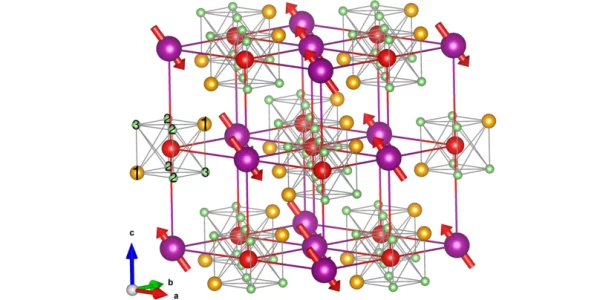A study involving PSI scientists from the LMS lab, and just published in Physical Review Letters has found that in manganese oxide, a textbook antiferromagnetic material, the site of an implanted spin-polarized muon is not well identified, but can change due to a previously neglected effect: magnetostriction.
The study was co-authored by LMS scientists Iurii Timrov, Giovanni Pizzi and Nicola Marzari, and targets one of the core missions of the LMS laboratory: to develop, integrate, and disseminate in the PSI community and the scientific community at large the computational capabilities required to understand, predict, and characterize materials as studied at PSI research facilities.
In this case, the study helped clarifying the origin of the previously unexplained behavior of the muon implantation sites in a well known antiferromagnetic oxide (MnO), that can be generalised to many more antiferromagnetic oxides.
In addition, the mid-term goal of the laboratory is to make this approach available to the community through the AiiDAlab interface, so that all experimentalists can use it for their own studies.
You can read a scientific highlight article on the NCCR MARVEL website.
Paper reference: Bonfà P., Onurah I.J., Lang F., Timrov I., Monacelli L., Wang C., Sun X., Petracic O., Pizzi G., Marzari N., Blundell S.J., and De Renzi R., "Magnetostriction-Driven Muon Localization in an Antiferromagnetic Oxide", Physical Review Letters 132, 046701 (2024) DOI: https://doi.org/10.1103/PhysRevLett.132.046701


